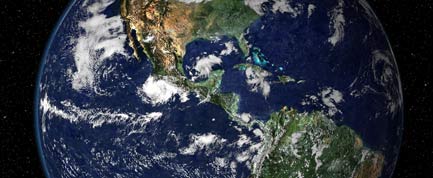Global Warming to Change Day's Length

In the next two centuries, global warming could cause the days to grow slightly shorter on Earth, a new study finds.
Another effect of warming, however, might actually lengthen the day.
As ocean water gets warmer due to climate, seawater expands thereby raising sea levels and changing the ocean’s circulation and even exerting more pressure on the ocean floor below in some areas, explained Jochem Marotzke of the Max Planck Institute in Germany.
These pressure changes won’t be uniform across the globe, because global warming will cause the ocean to warm more in some places than in others.
But over time, the differences will redistribute Earth’s ocean water, pushing it away from deep waters and onto shallower coastal shelf areas, primarily toward the North Pole.
Marotzke and colleagues, whose new study is detailed in the March 28 issue of the journal Geophysical Research Letters, used ocean conditions predicted in the latest report of the Intergovernmental Panel on Climate Change to model how ocean pressure would change as sea level rises.
Like the physics behind a figure skater pulling in her arms to cause a faster spin, the pressure transfer would shift the ocean’s mass toward Earth’s axis of rotation,Marotzke said. As the mass shifted, the Earth would spin around faster, shortening the length of the day by about 0.12 milliseconds (about 1/500th of the blink of an eye) by the year 2200.
Sign up for the Live Science daily newsletter now
Get the world’s most fascinating discoveries delivered straight to your inbox.
“Which, of course, is completely unnoticeable in everyday life,” Marotzke said, so the change in day won’t affect humans. The connection between global warming and length of the day was interesting because it was so unexpected, he said.
It's not clear, however, whether you might actually have less time or more time to ponder all this.
Other research suggests a warmer atmosphere would create stronger winds and actually slow the Earth down, causing the planet to spin slightly more slowly and therefore lengthening the day.
Other factors such as the drift of the Moon away from the Earth, weather and perhaps changes in Earth’s interior also imperceptibly change the speed of the planet’s rotation.

Andrea Thompson is an associate editor at Scientific American, where she covers sustainability, energy and the environment. Prior to that, she was a senior writer covering climate science at Climate Central and a reporter and editor at Live Science, where she primarily covered Earth science and the environment. She holds a graduate degree in science health and environmental reporting from New York University, as well as a bachelor of science and and masters of science in atmospheric chemistry from the Georgia Institute of Technology.









